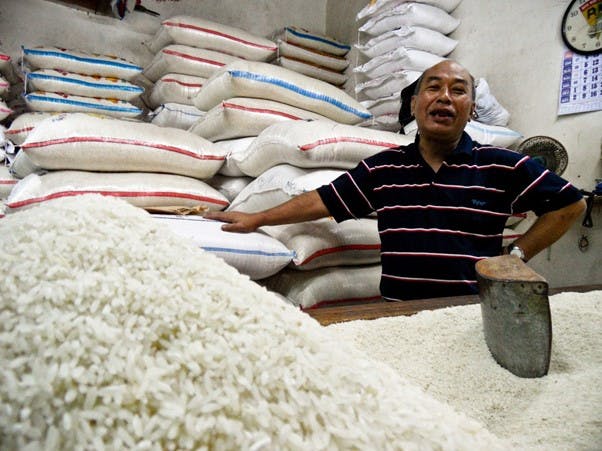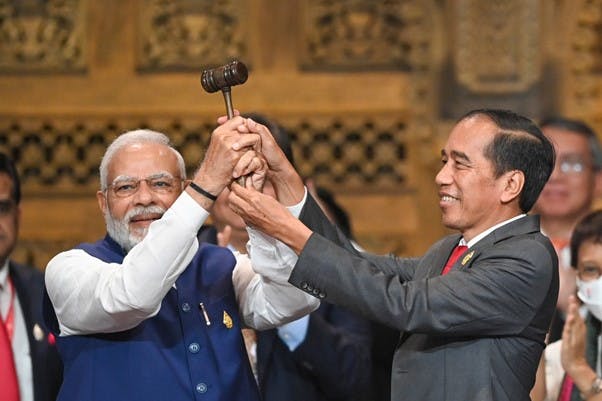Food protection using trade measures works in two ways. Surplus countries tax or ban exports to protect domestic consumers, often at the expense of poorer farmers. Deficit countries ban or tax imports to protect domestic farmers, at the expense of poorer consumers. Poverty tends to increase in both cases, and it is possible that food security is not actually enhanced in either case. Why do countries protect their food sector? An important aspect of political legitimacy in Asian countries is reasonably stable rice prices in domestic markets. Protection in both rice exporting and importing countries can help stabilise domestic rice prices. At least politically, there is no necessary trade-off. Food protection and food security can go hand-in-hand.
Economists have long argued that free trade is the best path to food security. Political forces have often made this principle impossible to follow, especially in times of turbulent markets, when food security is most at risk. Asean has confronted these conflicts often since its founding in 1967. There are successes and failures. By learning from experience, Asean has discovered that dialogue and cooperation are key to regional food security.
The political importance of food security was highlighted by the back-to-back monsoon failures on the Indian Sub-continent in 1965 and 1966. Then, the world was alerted to a looming catastrophe if growth in grain production lags behind population growth. The United States, holding the world’s largest grain reserves, was a reluctant and arrogant food aid donor. No PL-480 wheat – surplus wheat in government storage used as food aid – would be shipped unless India supported President Lyndon Johnson’s Vietnam War policies. India realised that its independence was at stake and turned to Norman Borlaug, the renowned plant breeder, and his Indian colleagues who were pushing for the adoption of the short-statured, fertiliser-responsive wheat varieties developed by Borlaug at the Rockefeller Foundation research center in Mexico. The Green Revolution was on its way.
When the International Rice Research Institute (IRRI) in the Philippines released its first short-statured, fertiliser-responsive rice variety (IR-8) in November 1966, the food security prospect for Asia was radically transformed. Even traditional rice-importing countries such as Indonesia and the Philippines could start to think realistically about investing in rice self-sufficiency campaigns. Dependence on the volatile world rice market could be exchanged for stable domestic rice production. Or so the dreams went.
In 1972, Indonesia learned the hard way that dreams of self-sufficiency in rice would require more than a national plan. The world food crisis from 1972 to 1974 was tough on Asia generally, and on Indonesia in particular. Thailand’s ban on rice exports meant that the world’s biggest rice market disappeared for almost a year. Globally, rice prices spiralled out of control. Higher oil prices increased Indonesian financial resources, and the rice crisis built political support for government policies designed to increase domestic rice production. More broadly, all Asean rice importers invested in securing supplies. Three decades passed without a world food crisis.

Rice trader sells rice at a local market in Indonesia. Image: Chris Quintana, International Rice Research Institute via Fulcrum.sg
In 2007, world food supplies tightened and prices for wheat, maize, and vegetable oils rose. Several Asian countries reconsidered the wisdom of maintaining low domestic rice stocks. The Philippines, in particular, tried to build up their rice stockpile to protect against shortages.
Higher rice prices in exporting countries, especially India, Vietnam, and Thailand, led to export controls to protect domestic consumers. Importing countries, especially the Philippines, scrambled for supplies. Fears of shortages spread, resulting in panicked hoarding by millions of households, farmers, traders, and some governments. This resulted in a sudden price explosion.
Fortunately, a speculative price spike can be ended by “pricking the bubble” and deflating expectations. Falling prices reverse hoarding behaviour. When the government of Japan announced in May 2008 (after international urging) that it would sell 300,000 tonnes of its surplus “WTO” rice stocks to the Philippines, prices in world rice markets started to fall immediately. By late August 2008, medium-quality rice for export from Vietnam was available for half the price in late April, as dis-hoarding gained momentum. In the end, Japan never sold any surplus rice.
The lessons from 2008 were still vivid as Asean leaders faced the current world food crisis. In 2022, the world faced two dilemmas: serious shortages of physical grain supplies because of disrupted supply chains from COVID-19 and the Russian invasion of Ukraine; and the reluctance of major players in the world food economy to trust international grain markets for their domestic food security needs, whether imports or exports.
Fortunately, the world community navigated around the food crisis. Collective action was proposed at the G20 Summit Meeting in November 2022 in Bali, chaired by Indonesia. The G20 Declaration emphasised that the world community could help stabilise food, fertiliser, and energy markets by avoiding panicked actions. The gains from a collective agreement to protect a global public commons — the resilience and depth of world grain markets, for importers and exporters — were available to all parties.
Asean leaders meet regularly to discuss national policies on food security, and how changes in those policies might affect the global rice market. Important lessons were learned from the food crisis in 2008. First, build up rice stocks in importing countries. Second, don’t panic, and talk through the food security issues at Asean Summits and relevant meetings. This low-key approach has worked. The spike in world food prices in 2011 included wheat, maize and soybeans/ vegetable oils, but not rice. World rice prices have been relatively stable since, despite considerable fluctuations in the prices of other staple foods on world markets.

Indonesian President Joko Widodo (right) passes the G20 leadership baton to the Prime Minister of India Narendra Modi (left) at the closing session of the G20 Summit 2022 in Nusa Dua, Bali. Image: M Risyal Hidayat/ Indonesia G20 Media Center
These lessons carried through to the 2022 food crisis. COVID-19 and Russia’s invasion of Ukraine fundamentally changed the food supply situation, and prices rose significantly. Disrupted energy supplies and high prices also raised the cost of food across the supply chain, from farm inputs to farming activities, to processing and transportation to retail outlets. Food price inflation will not slow quickly.
Significant risk factors, including adverse weather, port disruptions, and export barriers, could cause rice prices to rise sharply in 2023. Asean, through quiet cooperation, can prevent the world rice economy from spiralling out of control.
Asean has no enforcement mechanisms if individual countries want to do something that will adversely affect world rice prices, but the forum and discussion where Asean heads of state meet twice a year have proven remarkably successful. The record is clear. Rice prices used to be much more unstable than wheat and maize, because of the very thin world rice market. The opposite has been true since 2008, although the rice market remains thinly traded. Asean deserves credit.
Indonesia has the opportunity of the Asean Chairmanship to keep food security on the regional agenda. Bringing India into active discussions would be very helpful, especially as India is chairing the G20 this year. A strong joint statement from Asean and India on the importance of keeping regional borders reasonably open to food trade (not just rice) would be welcomed.
C. Peter Timmer is Thomas D. Cabot Professor of Development Studies (Emeritus) at Harvard University. He is a leading authority on agricultural development, food security and the world rice economy.









